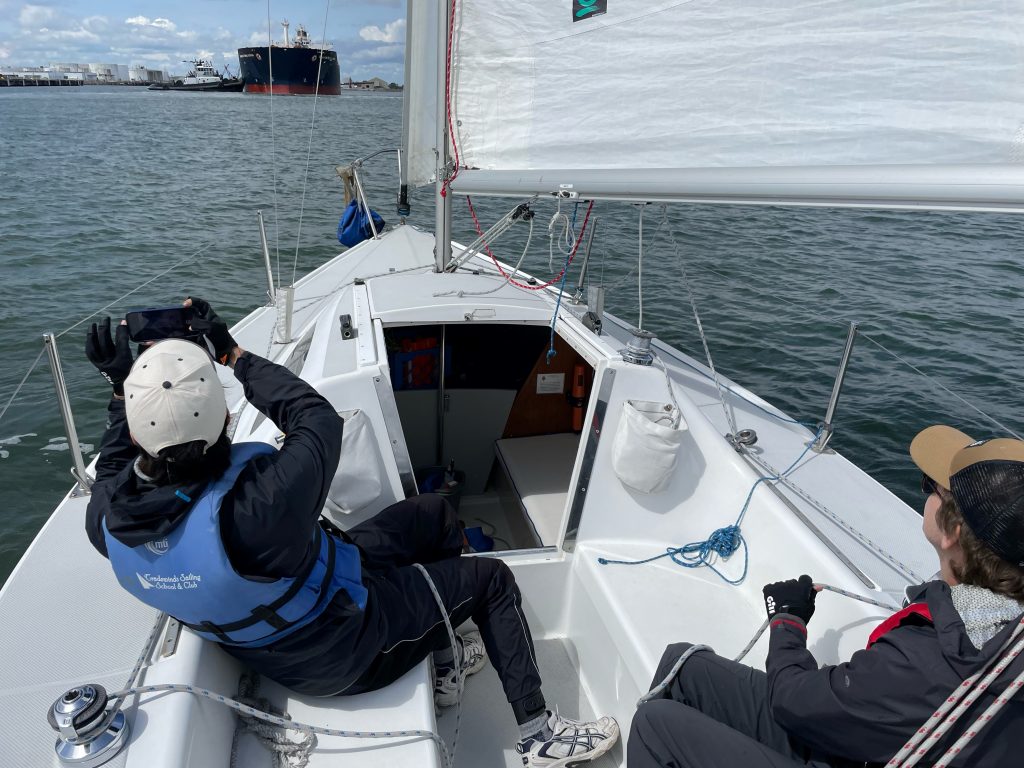
In the situation shown in this photo, which vessel has the right-of-way and why? Here at Tradewinds we focus on teaching new sailors how to cruise safely in the unique and challenging waters of the San Francisco Bay. At the conclusion of our sailing courses you will know how to navigate safely and confidently with huge ocean going ships both inside and outside the bay. While you might think you know who has the “stand on” and who has the “give way” rights, it will take a sharp eye to understand which of the ColREGS rules apply here. Comment below and we will reveal the proper rule used in this condition. – Jeff H.

I’m going to say that the large tanker-like vessel is “restricted in her ability to maneuver.” Therefore, the small sailboat should consider itself the give-way vessel.
Is it cheating if I answer? Clark is right according to Rule 18 (a)(ii) or (b)(ii). Rule 9 (b) and (d) also apply.
The important thing to note here is that this is not a time to use the “rule of tonnage” (stay out of the way of a bigger boat), a rule which does not exist but is very popular online. In fact, at sea when the tanker or container ship is not in its channel nor restricted in its ability to maneuver, you have the right of way if you’re under sail. Not so in our Bay and the surrounding waters. Believe it or not, despite the endless cynical remarks by people who should know better, the captains of these ships know the rules. And even if they have a dislike for sailors, which is uncommon, should they be in command when involved in an incident where they had broken the rules, it would mean serious consequences for their career.
No need to push it. The rules apply specifically when there is a risk of collision (Rule 7). Normally, you can pilot your boat to avoid such risks.